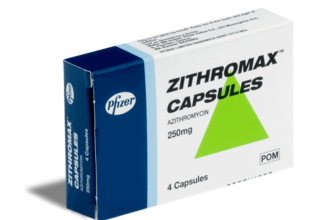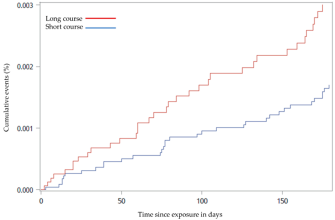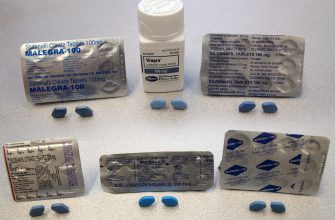Furosemide is commonly prescribed for the management of conditions associated with fluid overload, such as heart failure and edema. This loop diuretic effectively promotes the excretion of excess fluid, helping to alleviate symptoms like swelling and shortness of breath. In cases of heart failure, it assists in reducing preload and relieving pulmonary congestion, ultimately enhancing the patient’s quality of life.
Beyond heart failure, furosemide is indicated for patients with renal impairment, particularly those experiencing acute kidney injury or chronic kidney disease. Its ability to increase urine output can be crucial in managing fluid balance and preventing complications associated with fluid overload. In certain clinical situations, such as hypertension, furosemide may be utilized as an adjunct therapy to other antihypertensives, especially in patients with renal issues.
Furosemide also finds its place in the treatment of specific cases of hypercalcemia and as part of the management protocol in severe cases of pulmonary edema. Careful consideration of the dosing and monitoring parameters is essential to optimize therapeutic outcomes and minimize adverse effects. Regular assessment of electrolyte levels and renal function ensures safe administration, making furosemide a valuable tool in clinical practice.
- Furosemide Indications
- Common Conditions Treated with Furosemide
- Administration Considerations
- Overview of Furosemide
- Common Indications for Diuretic Therapy
- Heart Failure
- Hypertension
- Furosemide Use in Heart Failure Management
- Furosemide and Edema Reduction Strategies
- Dosage Considerations
- Complementary Approaches
- Role of Furosemide in Hypertension Control
- Furosemide Administration in Acute Pulmonary Edema
- Dosage Guidelines
- Monitoring and Adjustments
- Special Considerations in Furosemide Use
Furosemide Indications
Furosemide is primarily used for the treatment of edema associated with heart failure, liver cirrhosis, and renal disease. It effectively reduces fluid retention and helps alleviate symptoms such as swelling and shortness of breath.
Common Conditions Treated with Furosemide
This diuretic also plays a critical role in managing hypertension. By promoting the excretion of sodium and water, furosemide helps lower blood pressure in patients with high blood pressure conditions.
| Condition | Indication |
|---|---|
| Heart Failure | Reduces fluid overload and relieves symptoms of congestion |
| Liver Cirrhosis | Manages ascites and associated edema |
| Renal Disease | Aids in the treatment of acute and chronic renal failure |
| Hypertension | Lowers blood pressure effectively as part of a combination therapy |
| Pulmonary Edema | Relieves symptoms of fluid accumulation in the lungs |
Administration Considerations
Furosemide is typically administered orally or intravenously, based on severity and required speed of action. Regular monitoring of electrolyte levels and renal function is recommended to manage potential side effects such as hypokalemia and dehydration.
Consultation with a healthcare provider is essential for personalized dosing and to evaluate the suitability of furosemide for individual health conditions.
Overview of Furosemide
Furosemide primarily treats conditions related to fluid retention (edema) and hypertension. It works by inhibiting the reabsorption of sodium and chloride in the kidneys, promoting diuresis, which helps remove excess fluid from the body.
This medication is commonly prescribed for heart failure, renal disease, liver cirrhosis, and certain cases of hypertension. Furosemide can also benefit patients undergoing hemodialysis by helping manage fluid overload.
Dosage varies based on the condition treated, typically starting low and adjusting according to patient response. Monitor electrolyte levels regularly, as furosemide can lead to imbalances, particularly low potassium and magnesium levels.
Adverse effects include dehydration, dizziness, and potential ototoxicity, especially at higher doses. Always educate patients about the signs of these side effects and the importance of adhering to prescribed follow-up appointments to monitor their condition.
Furosemide can interact with other medications, such as nonsteroidal anti-inflammatory drugs (NSAIDs) and certain antihypertensives, necessitating careful management. Review all medications with patients to prevent complications.
In summary, furosemide is a powerful tool in managing fluid overload and hypertension, promoting kidney health and improving quality of life. Regular monitoring and patient education ensure safe and effective use.
Common Indications for Diuretic Therapy
Diuretics, like furosemide, play a significant role in managing various medical conditions. Their primary function involves promoting the excretion of sodium and water, which helps alleviate fluid overload in the body.
Heart Failure
Heart failure leads to fluid retention, making patients susceptible to edema and pulmonary congestion. Diuretic therapy effectively reduces these symptoms, enhancing comfort and quality of life. Regular monitoring of renal function and electrolyte levels is essential during treatment to prevent complications.
Hypertension
Diuretics are often prescribed to manage hypertension. By decreasing blood volume, these medications can significantly lower blood pressure. Thiazide diuretics are typically the first line, but loop diuretics like furosemide may be used when additional diuresis is required or when patients have significant renal impairment.
In cases of liver cirrhosis, diuretics help manage ascites and peripheral edema, reducing pressure on the abdominal cavity and improving patient comfort. Regular follow-ups are crucial to assess the effectiveness of the treatment and prevent complications such as electrolyte imbalance.
For patients with chronic kidney disease, diuretics assist in volume control and hypertension management. Clinicians should carefully evaluate the patient’s overall kidney function and tailor diuretic use accordingly.
In summary, diuretics serve multiple purposes across various medical conditions. Proper usage and monitoring ensure optimal outcomes for patients dealing with fluid retention and related health issues.
Furosemide Use in Heart Failure Management
Furosemide plays a significant role in managing heart failure, primarily by addressing fluid overload. It’s commonly prescribed to relieve symptoms such as dyspnea and edema. Patients frequently receive furosemide intravenously during acute decompensation or orally for chronic management.
The recommended starting dose varies, but typically, a dose of 20 to 40 mg daily is effective, with adjustments made based on the patient’s response and renal function. Monitoring fluid status, electrolytes, and renal function is essential during treatment. Regular assessments help prevent complications like hypokalemia and dehydration.
Loop diuretics like furosemide do not improve mortality but significantly enhance quality of life by alleviating symptoms. When managing heart failure, clinicians often combine furosemide with other heart failure medications, such as ACE inhibitors and beta-blockers, for a comprehensive approach.
Patients receiving furosemide should be educated about the importance of adhering to the prescribed regimen and maintaining follow-up appointments for monitoring. Encouraging lifestyle changes, such as dietary sodium restriction and fluid management, complements furosemide therapy, improving overall outcomes.
In summary, furosemide remains a cornerstone in heart failure management by effectively controlling fluid retention, enhancing patient comfort, and supporting additional therapeutic strategies. Regularly adjusting the dose based on individual patient needs ensures optimal management of heart failure symptoms.
Furosemide and Edema Reduction Strategies
For optimal reduction of edema, consider administering furosemide in conjunction with appropriate dietary modifications. A low-sodium diet minimizes fluid retention, enhancing the diuretic effect of furosemide. Monitor fluid intake to avoid excessive hydration, which could counteract furosemide’s intended benefits.
Dosage Considerations
Adjust the furosemide dosage based on the severity of edema and patient response. Starting doses typically range from 20 mg to 80 mg, with adjustments made according to the individual’s needs. Regular assessment of renal function is vital to prevent electrolyte imbalances during treatment.
Complementary Approaches
Incorporate other diuretics if needed, such as thiazides, to enhance efficacy. Encourage movement to stimulate circulation and further reduce swelling. Compression garments can also assist by applying consistent pressure to affected areas. Regular monitoring enables the identification of any adverse reactions, ensuring a safe and effective edema management strategy.
Role of Furosemide in Hypertension Control
Furosemide serves as a diuretic that effectively helps control hypertension, especially in patients with fluid retention or certain cardiac conditions. This medication assists in reducing blood pressure by promoting the excretion of sodium and water through the kidneys.
Here are key aspects to consider regarding Furosemide’s role in managing hypertension:
- Dosage and Administration: Typical starting doses range from 20 mg to 80 mg daily, with adjustments based on blood pressure response and individual tolerance. Regular monitoring is recommended to avoid dehydration and electrolyte imbalances.
- Combination Therapy: Furosemide is often used alongside other antihypertensive agents, such as ACE inhibitors or beta-blockers, to enhance blood pressure control and manage additional complications.
- Fluid Management: In patients with heart failure or renal impairment, Furosemide helps manage fluid overload, directly affecting blood pressure. Careful titration is necessary to balance fluid status and hypertension control.
- Monitoring Electrolytes: Treatment with Furosemide requires regular monitoring of potassium and magnesium levels. Low levels can lead to complications, such as arrhythmias.
- Patient Education: Educating patients about the importance of adherence to medication, diet, and lifestyle changes is essential for maximizing treatment outcomes. Encourage regular check-ups to assess the effectiveness of the therapy.
Furosemide offers a targeted approach to hypertension management in specific clinical scenarios, making it a valuable tool in a clinician’s arsenal. Tailoring therapy to individual patient needs enhances the potential for achieving optimal blood pressure control.
Furosemide Administration in Acute Pulmonary Edema
Administer furosemide intravenously for rapid diuresis in acute pulmonary edema. Initial dosing typically starts at 20 to 80 mg, adjusting based on clinical response. Monitor the patient’s vital signs and oxygen saturation continuously to assess the effect.
Dosage Guidelines
- Start with an IV bolus of 20-40 mg.
- Monitor response; if no diuresis occurs within one hour, increase the dose by 20 mg increments.
- Maximum doses can reach up to 200 mg if necessary, depending on patient tolerance and clinical status.
Monitoring and Adjustments
Assess renal function and electrolytes before administration and periodically thereafter. Watch for signs of dehydration or electrolyte imbalances, particularly hypokalemia. Monitor urine output closely to ensure effective diuresis.
If the patient shows improvement, continue furosemide at a lower maintenance dose, typically 10-80 mg IV every 12 hours based on individual needs.
In cases of renal impairment, consider adjusting the furosemide dosage or utilizing a continuous IV infusion. This approach can help achieve a sustained diuretic effect and prevent fluid overload while minimizing electrolyte disturbances.
In conjunction with furosemide, evaluate the need for supplemental oxygen or mechanical ventilation, ensuring comprehensive care for the patient experiencing acute pulmonary edema.
Special Considerations in Furosemide Use
Monitor electrolyte levels regularly when administering furosemide. This medication can cause significant shifts in sodium, potassium, and magnesium levels, leading to potential complications such as arrhythmias or muscle cramps. It’s crucial to assess kidney function periodically, as renal impairment can exacerbate the drug’s effects.
Adjust dosages in patients with liver cirrhosis to prevent fluid electrolyte imbalances. Consider utilizing a lower dosage to achieve diuresis while minimizing the risk of hepatic encephalopathy. Always evaluate the volume status and be cautious with high doses, especially in the elderly or those with compromised renal function.
Use injectable furosemide cautiously in patients with allergies to sulfonamides, although cross-reactivity is rare. Watch for signs of hypersensitivity and be prepared to intervene if an adverse reaction occurs.
Avoid rapid infusion of furosemide; it can lead to ototoxicity, particularly in patients receiving other ototoxic drugs or those with existing hearing impairment. Infuse slowly and monitor for auditory changes throughout treatment.
Pregnant individuals should receive furosemide only if absolutely necessary. Assess potential risks to fetal development and weigh them against the benefits. Breastfeeding mothers can use furosemide, but monitor the infant for signs of electrolyte imbalances.
Educate patients about the importance of hydration. Encourage adequate fluid intake unless contraindicated, as furosemide promotes diuresis and can lead to dehydration if not balanced properly. Regular follow-ups can help manage any arising complications effectively.










